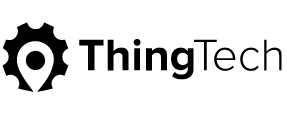IoT Has Seen Better Days, Have You?
Google the phrase ‘What is the IoT?’ Search results will return over 100 million hits. Click through a few of those and you’ll discover that the definition of the Internet of Things (IoT) varies with who you ask. Like electricity, we all know what it does and how to use it but very few actually know what it is. We don’t mean to criticize, but it’s no wonder why so many IoT deployments fail to realize a return on investment.
In trying to simplify a complex idea, the IoT is often reduced to a cool way to track things with dots on a map. What makes the IoT special isn’t gathering real-time data from a remote location; this technology has been around for decades. Companies successful with IoT implementations will tell you that it’s having the ability to put a virtual version of yourself side-by-side with the vehicles, machines, property, land, people, or equipment you’re managing. Do you want maximum value from the IoT? If so, you’ll have to go beyond real-time tracking and develop a data-driven strategy where you cash in on analytics after mining mountains of data for gold.
The value of real-time data isn’t just watching what’s happening as it happens. What most of us forget is that real-time IoT data becomes historical data instantaneously. The question you need to be asking is how to turn historical data into imminent data. In other words, IoT data that doesn’t help organizations pinpoint, prevent and predict problems before they occur is meaningless. Any IoT application that is up and running, regardless of the industry, should answer these five questions autonomously and in real-time:
1. Has a problem occurred?
2. What was the root cause?
3. Can IoT data help fix this problem?
4. Can IoT data help prevent this problem from occurring in the future?
5. Could this problem have been predicted using IoT data?
Here are three examples of how the IoT is helping organizations see better days ahead.
Cold Chain Management
Everything connected to a cold chain demands quality control, logistical perfection and clear accountability. Refrigerated cargo (e.g. pharmaceuticals, produce, meats, fruit, dairy) require temperature-controlled transportation until it reaches its destination. Perishable products that fall below or spike above constant temperature ranges can result in spoilage, wastage and losses.
Cargo can change hands multiple times in a cold chain. Knock on wood that your process remains intact. But suppose the chain of custody is broken or you detect intolerable temperature variations? Without visibility into cargo location and conditions, it won’t be long before the finger-pointing starts.
The IoT is a cost-effective solution for cold chain management. Commanding control of your cargo conditions and costs can be achieved with one or more sensors that capture location, movement, temperature and vibration. Data gathered from these sensors can then be sent to the cloud and analyzed alongside historical data. Any adverse activity, such as temperature controller failure or unplanned vehicle downtime, can be detected and reported in real-time to prevent spoilage/wastage and predict anomalies before lost production happens.
Smart Cities
It’s predicted that 70% of the world’s population will be urban by 2050. From transportation to grid modernization, the IoT is already helping municipalities become smart cities and solve large-scale infrastructure challenges. City officials across the country have recognized the need for predictive analytics, harnessing the power of the IoT to optimize snow plow routes, remotely monitor bridge and road conditions, detect and predict power outages, and extend vehicle lifecycles by automating condition-based maintenance schedules.
For example, ThingTech is helping NAIPTA (Northern Arizona Intergovernmental Public Transit Authority) transport millions of riders per year with an IoT-enabled transit asset management (TAM) solution. With ThingTech’s TAM solution, NAIPTA is now capturing approximately 85% of the work the facilities team is performing at each stop. This is data that can now be used to make smarter decisions to be a more efficient organization. Also, when the city planning department wants to develop new bus stops along a new route, this data can be used to plan for costs and resources with more accuracy.
Precision Agriculture
A Pareto-percentage of America’s usable water goes to irrigation in agriculture. Approximately 80% of our nation’s water is used to grow the food that feeds us, but much of it is wasted when applied across vast, uneven tracts of farm lands. Oftentimes, some crops get too much while other crops get too little.
Global increasing demand for food means mismanagement of water has grave consequences across the supply chain from farm to fork. Today, the IoT is helping achieve better irrigation and precision agriculture by combining smart sensors, cloud computing, and intelligent software that calculates the correct amount of water needed for each crop. Having arranged an effective error diagnosis system, farmers can then integrate APIs (Application Programming Interface) to aggregate and analyze past, real-time and forecasted weather data to predict future rainfall and prevent water scarcity.
The IoT has seen better days. If you want to improve your ability to pinpoint, prevent, and predict operational errors, contact us to discuss your IoT projects or to schedule a complimentary consultation.
#IoT #IIoT #DataAnalytics #PredictiveAnalytics #SaaS #SmartFarming #ColdChain #SmartCities #GovTech #Atlanta #Startup

